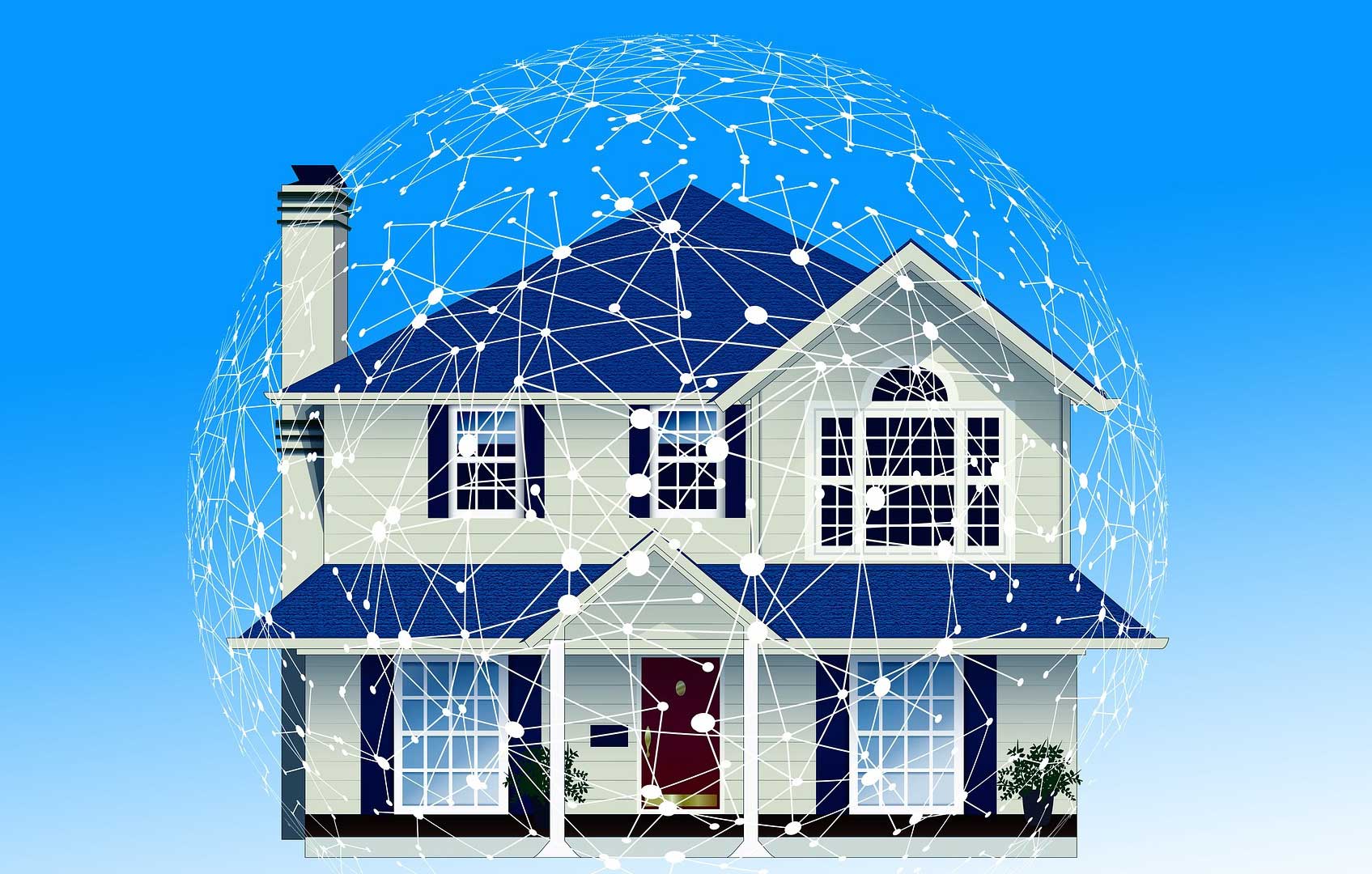
Which home automation system is the best? Comparing KNX, Loxone, Home Assistant and IO Broker
Home automation, also known as “Smart Home” or home automation systems, has become an increasingly popular trend in modern architecture. These systems allow remote control of various aspects of the home, taking advantage of the Internet of Things to create a more comfortable, safe and efficient environment.
In this article, we’ll explore and compare some of the leading home automation systems available on the market, including commercial options like KNX and Loxone, as well as open source alternatives like Home Assistant and IO Broker. We’ll look at the pros and cons of each, to help you determine which is the best home automation system for your specific needs.
KNX
History, origin and evolution
KNX is a home automation platform that has an even longer history than Loxone or Home Assistant IO Broker. KNX originated in the early 1990s as a collaboration between several leading companies in the home automation industry. Its goal was to establish a global standard for home automation that would allow different devices and systems to communicate with each other efficiently.
The KNX standard was launched in 1992 and has since seen significant growth around the world. KNX has been adopted by thousands of home automation product manufacturers and is used by millions of homeowners around the world.
Over the years, KNX has evolved and adapted as technology has advanced. It has introduced new functionality and features, and has remained a popular choice for those who want complete control over their smart home.
KNX is a global standard for building and home automation, supported by more than 400 manufacturers. This decentralized system uses a two-wire cable for communication and power, with a free topology. KNX offers a wide range of compatible devices and is recognized for its reliability and versatility, being suitable for various applications such as lighting, blinds, HVAC, water management and remote control.
Pros
- Interoperability: Allows devices from different manufacturers to be easily connected to form a KNX installation.
- Adaptability: Facilitates installation, expansion and modification in buildings.
- Cost savings: Extends the useful life of the building, avoiding obsolescence and depreciation.
- Energy efficiency: Promotes rational and economical use of energy in the operation of the building.
- Comfort: Increases comfort levels in buildings.
Cons
- Lack of redundant wiring: Can cause problems if a main line fails.
- Delays in message transmission: In case of bus saturation, KNX devices repeat messages up to three times if they cannot be sent immediately.
- No installation simulation: The ETS software does not currently allow simulation of the installation before programming.
- High initial costs: The initial investment for a KNX system can be high, especially when including all services and pre-wiring for voice and data.
- Communication limitations: Communication between two devices on the same line will not exceed 700m, and the maximum length of all cables in a single line will not exceed 1000m.
LOXONE
Development and growth
Loxone is another home automation platform that has seen significant growth in recent years. The history of Loxone dates back to its founding in 2009 by two brothers, Thomas and Martin Moser. Their goal was to create a home automation solution that was easy to use and affordable for the average consumer.
In Loxone’s early years, the company focused on developing a wide range of home automation products, from lighting systems to security and climate control systems. As Loxone gained recognition in the industry, they began to expand internationally and established offices in several countries.
Today, Loxone is known as one of the leaders in the home automation market. Its products are used by thousands of owners around the world, and the company continues to innovate and develop new solutions to meet the changing needs of its customers.
Loxone is a home automation system known for its reliability and ease of use. The Loxone Miniserver, available for around 500 euros, can control various aspects of the home, such as lighting, music systems and climate control. Free Loxone Config configuration software allows users to customize their homes to their specific needs, and the system can be controlled via iOS, Android or web apps. Additionally, the Miniserver can be expanded with additional modules to increase its capabilities.
Pros
- Simplified and cost-effective automation
- Easy-to-use setup with Loxone Config
- Multiple control options (iOS, Android, web)
- Expandable with additional modules
- Saving time and energy (up to 70%)
- Greater security and 24/7 monitoring
- Personalized solutions for each user
- Affordable maintenance and remote support
- Competitive prices and starter kit at €498
- Powerful system with multiple logical operations.
Cons
- Limited hardware options compared to other home automation systems
- Installation requires professional knowledge
- Lots of competition in the market with different features and prices
- The actuators do not have a manual activation option, which complicates maintenance
- Limited catalog of interfaces with poor finishes
- High initial investment, despite long-term benefits
- Additional installation, configuration and integration costs
- Possible need to acquire new skills or hire professionals
- Compatibility issues with some third-party systems or devices
- Privacy concerns due to the collection and processing of user data
History of Home Assistant and IO Broker
History of Home Assistant and IO Broker – Emerging Competitors
Home Assistant and IO Broker are open source home automation platforms that have gained popularity in recent years. Its history dates back to its beginnings as an open source project developed by a group of home automation enthusiasts. The main goal of Home Assistant and IO Broker was to offer a free and open source home automation solution that could be customized according to the needs of each user.
As the project grew in popularity, more and more people began to contribute to the development of Home Assistant and IO Broker. This led to a series of updates and improvements to the platforms, resulting in greater functionality and a more intuitive user experience. Today, Home Assistant and IO Broker have become popular options for those who want to have full control over their smart home without having to rely on a proprietary platform.
Home Assistant and IO Broker are two popular open source home automation systems that offer great flexibility and customization. Home Assistant stands out for its focus on local control and privacy, supporting more than 400 devices and offering an easy-to-use interface through web, Android or iOS applications, as well as voice assistants such as Amazon Alexa and Google Assistant. On the other hand, IO Broker is an integration platform for the Internet of Things that supports various devices and protocols, defining rules for data exchange between different systems.
Pros
Some advantages of open source systems like Home Assistant and IO Broker include:
- Greater flexibility and customization
- Ability to integrate a wide range of devices and protocols
- Local control and data privacy
- Active communities providing support and resources
Cons
However, these systems also present some challenges:
- Steeper learning curve, especially for less technical users
- Possible need for additional configurations and scripts for full functionality
- Less official support compared to commercial systems
Despite these challenges, users have found creative solutions, such as configuring a Raspberry Pi with Node-RED to integrate KNX, Loxone, MQTT and Alexa, providing a cost-effective and reliable solution. Additionally, the MQTT integration with Home Assistant allows Zigbee devices to be connected via Zigbee2MQTT, although it is important to be careful of race conditions where updates can propagate endlessly between controllers.
Open Source Systems
Benefits and Disadvantages
Open source systems offer a number of significant benefits, including:
- Transparency: Complete visibility into the codebase ensures data transparency and eliminates the risk of crashes.
- Freedom of use: Allows unlimited reinstallations on any number of machines due to the applicable license.
- Control: Does not require the original solution provider for updates or bug fixes.
- Adaptation: Customizable to individual needs, other products, and may interact with other systems and tools without approval.
- Low cost: No acquisition costs, but may incur support or security upgrade costs.
- No expiration: It does not depend on a single supplier; The community is responsible for development and updates.
- Security: Issues resolved quickly due to community identification and resolution. Open source systems are also free of backdoors.
- Support: Generally available for free through online communities. Some open source solution creators offer paid support.
- Independence: Allows the development of new products without starting from scratch.
- High quality: Excellent design and auditable code ensure high quality.
- Fair competition: Promotes customer support business models, ensuring equal conditions for the offer of services.
- Standardization: Prevents incompatibilities and promotes high interoperability between systems.
However, these systems also have some potential disadvantages:
- Long-term costs: You may incur support, training, or troubleshooting costs.
- Specific support: There is no entity to claim or guarantee support.
- Technical knowledge: Requires some technical knowledge for configuration.
- Discontinuation: May be abandoned by the developer community, requiring the purchase of a new program or custom development.
- Security Risks: If not supported by experts and without adequate protection, data security may be compromised.
- Performance issues: Occasionally they have web speed errors, affecting data uploading and downloading.
- Low stability and flexibility: Particularly in multimedia and gaming areas.
Users recommend considering a bus system such as KNX, Zigbee or Z-Wave to ensure future expandability and ease of expansion. They also warn against using WiFi devices for smart home applications due to the lack of a common protocol standard and potential interference issues. Additionally, you should consider having a backup solution to override smart switches in case of computer problems.
Conclusion and recommendations
Home automation systems offer a wide range of options to automate and control various aspects of the home. While commercial systems like KNX and Loxone provide reliable and easy-to-use solutions, open source systems like Home Assistant and IO Broker feature greater flexibility and customization. Choosing the best home automation system will largely depend on the user’s specific needs, budget, and level of technical knowledge.
When evaluating different options, it is important to consider factors such as interoperability, scalability, and security. Regardless of the system chosen, home automation has the potential to improve comfort, energy efficiency and security in the home. As technology continues to evolve, we are likely to see even more advancements in this fascinating field.
FAQs
What are the benefits of choosing KNX for home automation?
The KNX home automation system offers multiple advantages, among them, an increase in the quality of life of its users thanks to its functionalities. In addition, it contributes to energy savings, improves security, reduces costs in the long term and provides well-being and peace of mind to the inhabitants of the home.
What is the KNX system?
The KNX system is an internationally standardized communication protocol used for the automation and control of homes and buildings. It is an open system that has the support of more than 500 manufacturers that integrate this protocol in their devices.
What is Loxone and what is its purpose?
Loxone is an Austrian company that offers advanced home automation solutions, designed to maximize automation and ease of use in the home. Its systems seek to optimize comfort, safety and energy efficiency.
What are KNX, EIB, LonWorks, Bacnet and Modbus systems used for?
The KNX system is a global standard for the automation of home applications and building control, which includes the management of lighting, blinds, security systems, heating, ventilation, air conditioning, monitoring, alarms, water control, energy management , measurement, appliances, audio and more.
